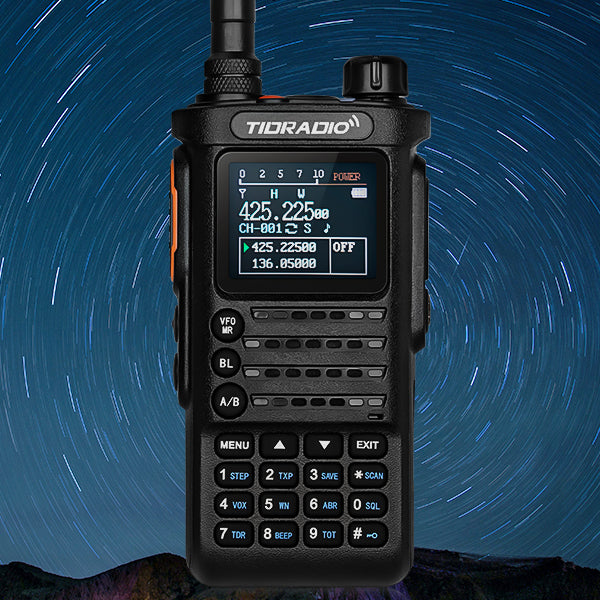

The International Telecommunication Union (ITU) has allocated 15 band numbers to the radio spectrum of frequencies of which VHF is band 8 (30 MHz to 300 MHz), and UHF is band 9 (300 MHz to 3GHz).
Differences between UHF and VHF
The communication range of UHF radio is shortened than VHF radio. Because UHF has a shorter frequency wavelength, it is subject to more interference during propagation, but it is allowed to occupy a larger bandwidth. In the short wavelength of UHF radio, the size of the radio wave is directly related to the transmission length and the receiving antenna.
Typically, UHF antennas are short and wide. VHF is commonly used in FM radio(Like NOAA channels work on 162MHz), radio, long-range data communications, and maritime communications. VHF is very popular in professional applications. Since VHF radio waves are longer and suffer less interference during transmission, the call distance is longer than that of UHF.
Flash Sale
View all
-
2nd Gen TD-H8 Radio with Spare Battery & Upgraded Mic & 771 Antenna
Regular price From $52.99 USDRegular priceUnit price per -
2nd Gen TD-H8 Ham GMRS Handled Radio 2 Pack
Regular price $66.99 USDRegular priceUnit price per -
2nd Gen TD-H8 Ham GMRS Radio 2 Pack with Spare Battery
Regular price From $77.87 USDRegular priceUnit price per -
2nd Gen TD-H8 Ham GMRS Dual Band Radio 4 Pack
Regular price $128.98 USDRegular priceUnit price per




